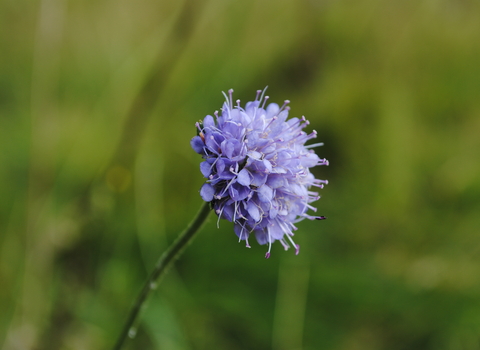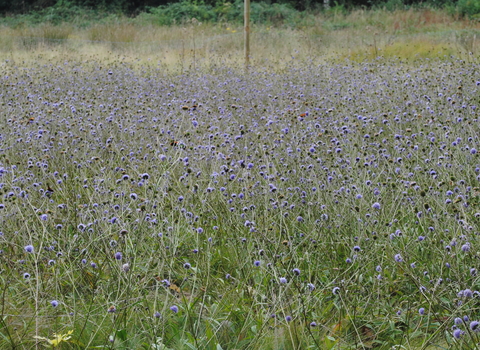
©Amy Lewis

©Amy Lewis
Devil's-bit scabious
The pincushion-like, lilac-blue flower heads of Devil's-bit scabious attract a wide variety of butterflies and bees. Look for this pretty plant in damp meadows and marshes, and on riverbanks.
Enw gwyddonol
Succisa pratensisPryd i'w gweld
July to OctoberGwybodaeth am rywogaethau
Ystadegau
Height: up to 75cmCommon.
